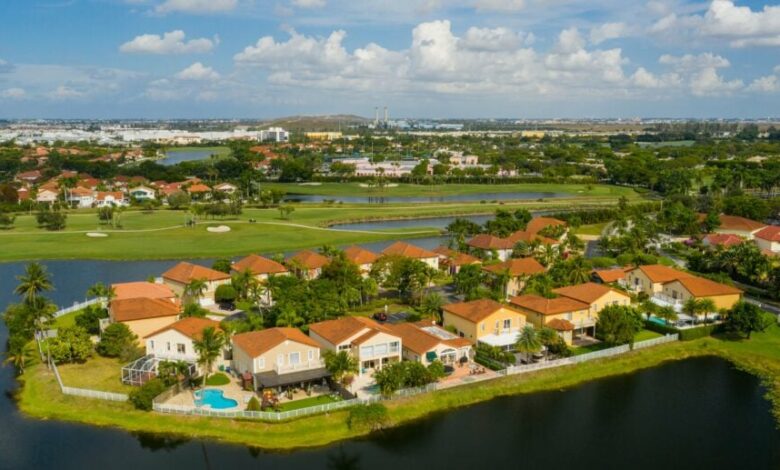Home Insurance Premiums Are Set to Hit a Record This Year—When Will Prices Fall?

Insurance premiums are skyrocketing across the U.S., with no end in sight to annual increases that may just make you rethink investing in real estate in several parts of the country. At the very least, anyone investing in 2024 needs to be aware of the states where insurance premiums are rising the fastest—and factor these changes into their costs.
According to a recent report by the insurance comparison platform Insurify, home insurance premiums are set to rise by 6% in 2024 after already jumping by 20% over the past two years. And that’s just the average. Many states will see double-digit premium increases this year thanks to a perfect storm (excuse the pun) of factors, most notably extreme weather events and high home repair costs.
Let’s take a deeper dive into these factors—and which states are affected the most.
The Impact of Extreme Weather Events
It’s clear that the sheer volume of extreme weather events affecting the U.S. is rising at an alarming rate. In the 1980s, the U.S. had three storms that caused $1 billion in damage each year. Fast-forward to the 2010s, and that number was 13 per year. In 2023, the U.S. experienced 28 such weather events in a single year.
Obviously, no one is surprised by hurricanes in Florida—but home insurers are increasingly wary of working in the state because of the frequency and intensity of such events. Home insurance premiums already are the highest in the country in the Sunshine State, with an average of $10,996 in 2023, according to Insurify data. And they are due to rise again by 7% this year, bringing the cost of insuring a typical Florida home to $11,759.
Other states vulnerable to hurricanes are also seeing huge premium hikes. Louisiana’s insurance premiums are set to rise a huge 23%, bringing the average annual home insurance cost in the state to $7,809. South Carolina and North Carolina are projected to see significant premium increases, too, of 11% and 10%, respectively.
These increases, while hugely problematic for homeowners in these areas, are somewhat expected, at least from a geographical standpoint. What will come as a (nasty) surprise to some investors are the projected double-digit increases in states that haven’t traditionally been associated with extreme weather.
Coastal storm damage risk is now impacting insurance premiums in Maine, which traditionally was seen as a lower risk. The Maine Climate Council projects a 1.5-foot relative sea level rise (SLR) by 2050. Connecticut is another state that traditionally hasn’t been seen as high risk but is now identified as being vulnerable to hurricanes, coastal storms, and sea level rises.
Even more unexpectedly, the Midwest is increasingly suffering from huge home insurance premium hikes. Michigan and Illinois will see premium increases of 14% and 10%, respectively. Why? Wind and hail.
July 2023 was a particularly devastating month for the Midwest, with two billion-dollar storms pummeling states from Nebraska to Michigan within a week of each other. “Ping-pong to golf ball-sized hail and high winds damaged many homes, vehicles, businesses, and other infrastructure,” according to the National Oceanic and Atmospheric Administration (NOAA).
Home insurance typically covers wind and hail damage; it’s no wonder insurers are raising premiums in states experiencing property damage from golf ball-sized hail.
These extreme weather events perhaps aren’t quite as dramatic as hurricanes, and, as Tim Zawacki, principal research analyst for insurance at S&P Global Market Intelligence, told NPR, “a lot of these storms don’t make national headlines.” However, they do have an enormous impact “at the local level,” and “the breadth of where these storms are occurring is something that […] the industry is quite concerned about.”
Beyond Climate Change: The Ongoing Building Supply and Labor Cost Crisis
Home insurance premiums are directly affected by home construction prices. This is the other factor that has been wreaking havoc on home insurance costs since the pandemic.
Infamously, the cost of just about every building material skyrocketed beginning in 2020, from lumber to construction steel and fiberglass, to say nothing of a labor shortage that continues to this day. Overall, construction costs are still rising, with a recent report projecting 3% to 6% increases across the country in 2024.
These cost increases contribute to insurance premium rises—but that’s not the whole story. The high cost of certain materials is reshaping what insurers are prepared to cover in the first place.
In high-risk areas, property owners are beginning to see specific structural features or materials in their homes excluded from home insurance policies because of the high rates at which they’re claimed for. This is the case for aluminum and knob-and-tube wiring. Many insurers have begun excluding this type of wiring from their policies as a form of risk mitigation.
Aluminum used to be four to five times cheaper than copper and, therefore, was a popular cost-cutting wiring material. It’s also much less flexible and more fragile than copper. However, take a guess at what happens to aluminum wire in a storm.
The Future: Can The Home Insurance Crisis Be Fixed?
Some insurers are cutting their losses and stopping coverage in high-risk areas. Florida has it the worst: Farmers Insurance, Bankers Insurance, and Lexington Insurance all pulled out of the state last year.
It is worth pointing out that Florida’s home insurance crisis is complex, perhaps more so than in other states. On the one hand, is the state’s problem with the scarcity of reinsurance: Reinsurance providers are pulling out of the state, too, leaving home insurance providers with no recourse if they can’t cover their costs.
Then there’s the issue of fraudulent claims. In fact, the problem is so widespread in the Sunshine State that it’s being tackled at the state legislative level.
All these problems exist in other states, too. They’re just exacerbated in high-risk areas where the costs are increasingly insurmountable for everyone involved. If the trend continues, “it’s possible that the highest-risk areas will become uninsurable,” according to Betsy Stella, vice president of carrier management and operations at Insurify. “However, where there’s demand, typically a supplier will appear. The question will be, at what cost?”
The answer is that making home insurance affordable again may involve restructuring it. One solution to the current crisis could involve creating state-run insurance providers focusing on specific natural disasters, following the FEMA flood insurance model. Florida is already considering establishing a state-run insurance program for hurricane claims.
To be more precise, some Florida policymakers are proposing to repurpose its state-run insurance provider, Citizens Property Insurance, into a hurricane-only provider for all Florida residents. Currently, Citizens is a “last-resort” insurer but is increasingly becoming the default provider for residents who can’t get any other insurance. Citizens is not enthusiastic about the proposed changes, arguing that it would make getting reinsurance harder.
The other set of proposals center on making it possible to insure only the remaining balance on a mortgage rather than the replacement value of a home. This could make insurance more affordable but could put homeowners in a difficult position if the amount they needed to claim exceeded their remaining mortgage balance.
Final Thoughts
Ultimately, it’s difficult to tell whether 2024 will bring about reforms to home insurance markets in high-risk areas. Legislative changes happen slowly. We’ll just have to wait and see what solutions will be implemented—and when.
In the meantime, it may be wise to hold off investing in an area with known home insurance problems.
Ready to succeed in real estate investing? Create a free BiggerPockets account to learn about investment strategies; ask questions and get answers from our community of +2 million members; connect with investor-friendly agents; and so much more.
Note By BiggerPockets: These are opinions written by the author and do not necessarily represent the opinions of BiggerPockets.
Source link





